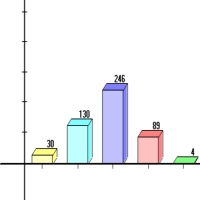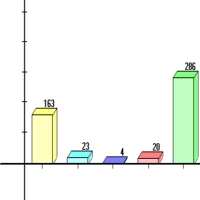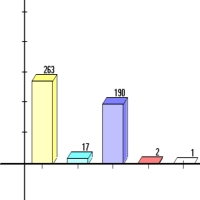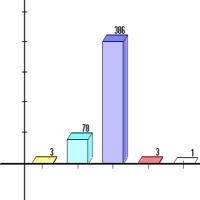| We discussed the ballistocardiogram in class. Supplementary Notes on this topic have been prepared. |
"Things should be made as simple as possible, but not any simpler."
-- Einstein
We finished Chapter 8 and completed Chapter 9 of the textbook except for §9.7 - Angular Momentum. Next class we will pick up this section and then begin Chapter 10 - Energy.
Here is a small problem which you may wish to do in order to check whether you understand forces and tensions. It will not be collected, and is only for your amusement and edification.
The last example of the series we did in class today is of the blocks A and B connected by a string with mass mS. Assume that the string is uniform and has a total length L. Assume, incorrectly, that the string is perfectly horizontal with no sag.
When a collision occurs, the total impulse Favg![]() t
on an object equals its change in momentum. Thus for a constant change in momentum,
as the duration of the collision becomes less the average force exerted on
it becomes larger.
t
on an object equals its change in momentum. Thus for a constant change in momentum,
as the duration of the collision becomes less the average force exerted on
it becomes larger.
When a person has a collision with a duration of less than about 100 ms, then the damage caused to the body is roughly proportional to the total impulse.
For longer duration collisions, it is the magnitude of the force of the impulse that is proportional to the damage that can be caused. The is because it is the acceleration of the body that causes the damage. For up to a few seconds, the body can withstand accelerations of 15 g; longer duration accelerations of this magnitude can cause the blood to stop circulating. Larger accelerations than 15 g can cause damage such as tearing the aorta away from the heart. Yuck!
This is why modern cars have crumple zones. We illustrated with 2 movie clips.
The first clip is of an older car, without crumple zones. You may access it by clicking on the button to the right. The file size is 118k, and will appear in a separate window. To view the clip requires that you are able to view mov format movies, such as with the QuickTime player. QuickTime is available free from http://www.apple.com/quicktime/. |
|
The second clip is of a more modern car. You may access the clip by clicking on the button to the right. The file size is 441k. To view the clip requires that you are able to view rm format movies, such as with the Real Media player. That player is available free from: http://www.realnetworks.com/. |
The clips are by the U.S. National Highway Traffic Safety Administration, and are used with permission. The original site of the clips is: http://www.nhtsa.dot.gov/cars/testing/ncap/Videos.html.
| Here are the clicker questions we asked in class today |
Here is the distribution of results for this question. You collectively want more examples. You were in luck: I did a lot of examples in class today. I must tell you that I don't think watching someone else do an example is nearly as productive for your education as doing examples and problems yourself. I am unlikely to make a major change on this issue, but will try to make a minor adjustment. |
 |
I was surprised to find out that about 60% of you find that of the five choices, the questions that you write out and have brought to the front were the thing you felt was least productive. Based on these results of these two questions, PHY138 staff will do some more thinking about how we're organising our class time. |
 |
Initially the class was almost evenly split between Yes and No. After some discussion amongst yourselves almost 80% of you realised that this is not an example of the Third Law. This questions is about two forces caused by two different agents on one body. Newton's Third Law only talks abou the forces that two bodies exert on each other.
Here a bare majority of the class answered correctly: A - the collision where the ball bounced back. If you missed this, think carefully about the change in the momentum of the ball. |
 |
You did much better on this question. The correct answer is C - the collision where the ball is captured. If you had trouble with this, particularly if you answered B, think carefully about the change in the vector momentum of the ball. |
 |
| Pdf version of the PowerPoint on the side screens. | |
| Today's Journal. |
| The arrows let you jump to the previous/next class summaries. |